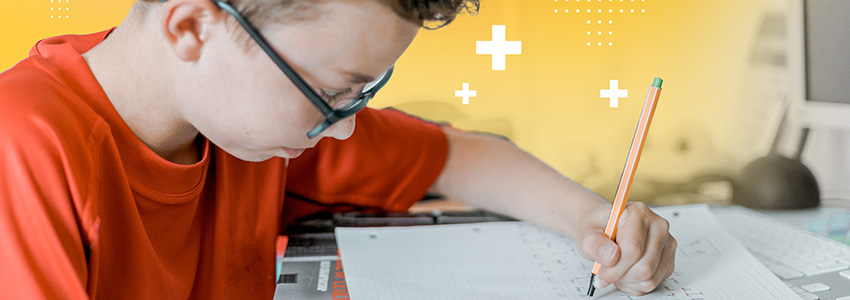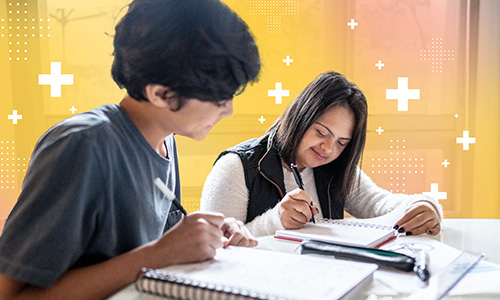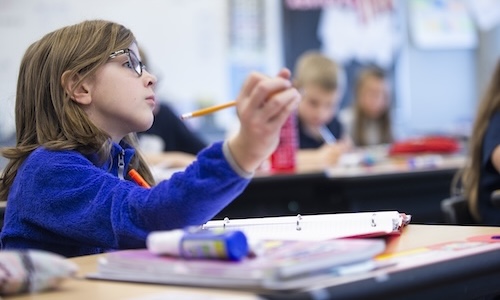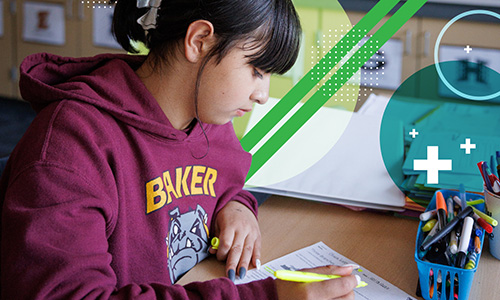 This summer, hundreds of educators from around the world gathered in the (frankly sweltering) heat of New Orleans for our annual Fusion conference. I’m always excited to hear keynote speakers (who doesn’t like a good TED Talk?), but sometimes, the specificity of the message rings particularly true. When Tom Guskey, educator extraordinaire, took the stage, I was initially captivated by his Jeff Goldblum voice. Then, he shared that he studied under Benjamin Bloom (yes, that Bloom). I sat up a little straighter. And once I truly tuned in, I realized I was listening to a warmly funny, deeply relatable speech about how we teachers—all of us—get the whole idea of assessment objectives just a little bit… wrong.
This summer, hundreds of educators from around the world gathered in the (frankly sweltering) heat of New Orleans for our annual Fusion conference. I’m always excited to hear keynote speakers (who doesn’t like a good TED Talk?), but sometimes, the specificity of the message rings particularly true. When Tom Guskey, educator extraordinaire, took the stage, I was initially captivated by his Jeff Goldblum voice. Then, he shared that he studied under Benjamin Bloom (yes, that Bloom). I sat up a little straighter. And once I truly tuned in, I realized I was listening to a warmly funny, deeply relatable speech about how we teachers—all of us—get the whole idea of assessment objectives just a little bit… wrong.
“I’m not teaching this again!”
Raise your hand if you’ve ever cooked the same recipe twice. Keep it up if you had to look at the recipe that second time.
I’ve cooked the same exact coconut oil chocolate chip cookies every month for the past five. And I still have to look at the recipe. That is a project-based learning experience, and I’m an adult. What if my cookbook frustratedly yelled at me, “I’m not teaching this again!”
During his keynote, Guskey asked us, what if we stopped treating assessment like a high-stakes, winner-takes-all guessing game and started treating it like practice? What if we stopped designing assessments that mimic a casino more than real life jobs, relationships, and experiences?
Teachers, drop the ego
Teachers, keep your hands up if you’re ever triumphantly “stumped” your students on an assessment question.
Guskey’s Wicked Witch of the West impressions of “They didn’t see that one coming!” had the audience laughing out loud because we all felt so lovingly called out. I was sitting toward the back of the room chuckling to myself as he confessed that he, too, once crafted test questions based on obscure textbook captions, something I’ve absolutely done myself.
But what are we really assessing in those moments? Not understanding, but cleverness. Not mastery, but memory tricks.
Guskey was clear: If students are surprised by what’s on an assessment, that’s not on them. That’s on us. Our impact isn’t measured by what we’ve covered; it’s measured by what students actually understood. That mindset shift requires a different view of what counts as fairness. It also requires humility.
Guskey also asked the room if we’d ever taught a lesson where we felt “on.” Where we thought, “Aw, man, I wish the principal had stopped by for that one!” And then, when it came time to assess what our students learned, we realized that maybe things didn’t go as well as we thought. Teachers, I’ll say bluntly what Guskey said nicely: It’s time we join the real world where our constituents determine our success, not our feelings of our own performance. And, yes, that’s pretty humbling.
Reteaching isn’t failure. It’s the job.
Picture something you really know, deep in your bones where your hands can just do it—whether it’s throwing a frisbee or the steps of your skin care routine—and answer this: How many times have you done it? And how many times, at the start, did you falter?
This is the second thing Guskey taught me: Reteaching isn’t something we should be ashamed of—or worse, better than. It’s the job.
When students need support, we can’t just say “the same thing louder and slower” and call that differentiation. Real reteaching means doing it differently, and doing it regularly, that is, shifting the approach, not just repeating the script.There’s often pushback here: “But it’s not fair to the kids who got it the first time!” Guskey challenged that assumption by asking us to look at other professions:
- Surgeons don’t start their first operation on a living patient
- Pilots don’t learn to fly in a real cockpit
- Lawyers begin as assistants, working their way up alongside mentors
- Hairdressers don’t start on paying customers. They practice on wigs or themselves (Yikes)
Everyone gets to practice. Everyone gets to mess up in a low-stakes environment before they’re expected to perform under pressure. Why would we expect less of students? Why do we think the ability to get something right on the first try is the ultimate indicator of learning?
For as much as we talk about preparing students for the “real world,” it doesn’t seem like we’re honest about what that means.
Make the assessment the practice
I’m currently reading The Will of the Many, which, like all good sci-fi/fantasy involves Exceptional Students™ at the Exceptional Student School™. In this plot, the summative assessment is running a labyrinth. Any idea how the kids train for this final assessment? They run the labyrinth. Every day. So when it comes time for the “test,” they’re ready.
That’s the kind of alignment we need to aim for. When assessments become a form of consistent practice—clear, transparent, and embedded in everyday learning—students aren’t guessing what matters. Instead, they’re invited into the learning process as partners, not tricked into it as contestants.
And when students make mistakes, that’s not the end of the road. That’s the middle of the cycle. As Guskey said, the real work begins in the correction, like when athletes watch playback of their most recent games. “You learn more from a bad performance,” Guskey said. In the do-over. In the pause-and-try-again.
What doesn’t work about formative assessment, and why stickers do
“If students know they’ll get a second chance, won’t they just stop trying the first time?” Guskey had a smart and refreshingly honest answer to this fair teacher question. We often ask students to be driven by intrinsic motivation alone, as if that’s a natural state for everyone. But let’s be honest: most of us like a little recognition. Most of us work because we’ll get paid. Most of us expect our supervisors to acknowledge our hard work.
Incentives aren’t a sign of weakness. They’re a sign of humanity. We mirror the real world when we offer incentives to our students. It’s normal for all humans, and it’s certainly developmentally appropriate for kids and teenagers.
But why are we so obsessed with negative incentives—and almost zero positive incentives? If you don’t believe me, ask students what will happen if they fail, versus if they succeed. If students “fail,” they could:
- Suffer a stern conversation, a visit to the principal, a phone call home, a suspension, or an expulsion
- Be held back a grade, which is embarrassing
- Go to summer school, which sacrifices their free time
- Miss out on recess or field trips
- Lose their devices
- Get grounded
- Have to sit in certain undesirable classroom locations, like near the teacher
- Be punished with extra work
If they “succeed,” they:
- Get a good grade
The very fact that we have more heavily weighted tangible punishments in place shows we believe that students respond to tangible things. And yet we only rely on the highly sophisticated intrinsic motivation as the positive. Couldn’t we make the list of positive reinforcement just a little bit longer?
Let’s revisit the initial question: How do we motivate students who 1) know they’ll get a second chance without 2) having that second chance be a punishment? Maybe we scale the rewards, instead of scaling the punishments.
Guskey shared an anecdote from his graduate teachings. One colleague of his began printing certificates of mastery on two different sized papers. First attempt? Big paper. Second? Still mastery, just smaller. Everyone was skeptical. “These are adult grad students!” they said, incredulous. And, of course, it worked. So Guskey began giving his grad students stickers on their papers, and that worked, too. These grown adult learners cared.
Longing for recognition isn’t childish; it’s human. It’s connective. We’re not saying ditch rigor. We’re saying prioritize rapport. A certificate of mastery or sticker (even a silly one) can go a long way.
Teach like the real world works
Teachers, let’s get clear on our assessment objectives: Are we trying to push kids off a cliff and hope they fly on the first takeoff? Are we trying to catch kids who haven’t read the footnotes? Or are we trying to teach kids that practice is a good thing, learning isn’t scary, and we’re proud of them regardless of their learning schedule?
If we want kids to be lifelong learners, we have to stop making them afraid of getting it wrong. We have to ensure they are:
- Unscarred by learning moments
- Understanding of what real-world learning is
- Unafraid of making mistakes—because that’s where the actual learning occurs
If the real world gives second chances—and it does—shouldn’t we?




